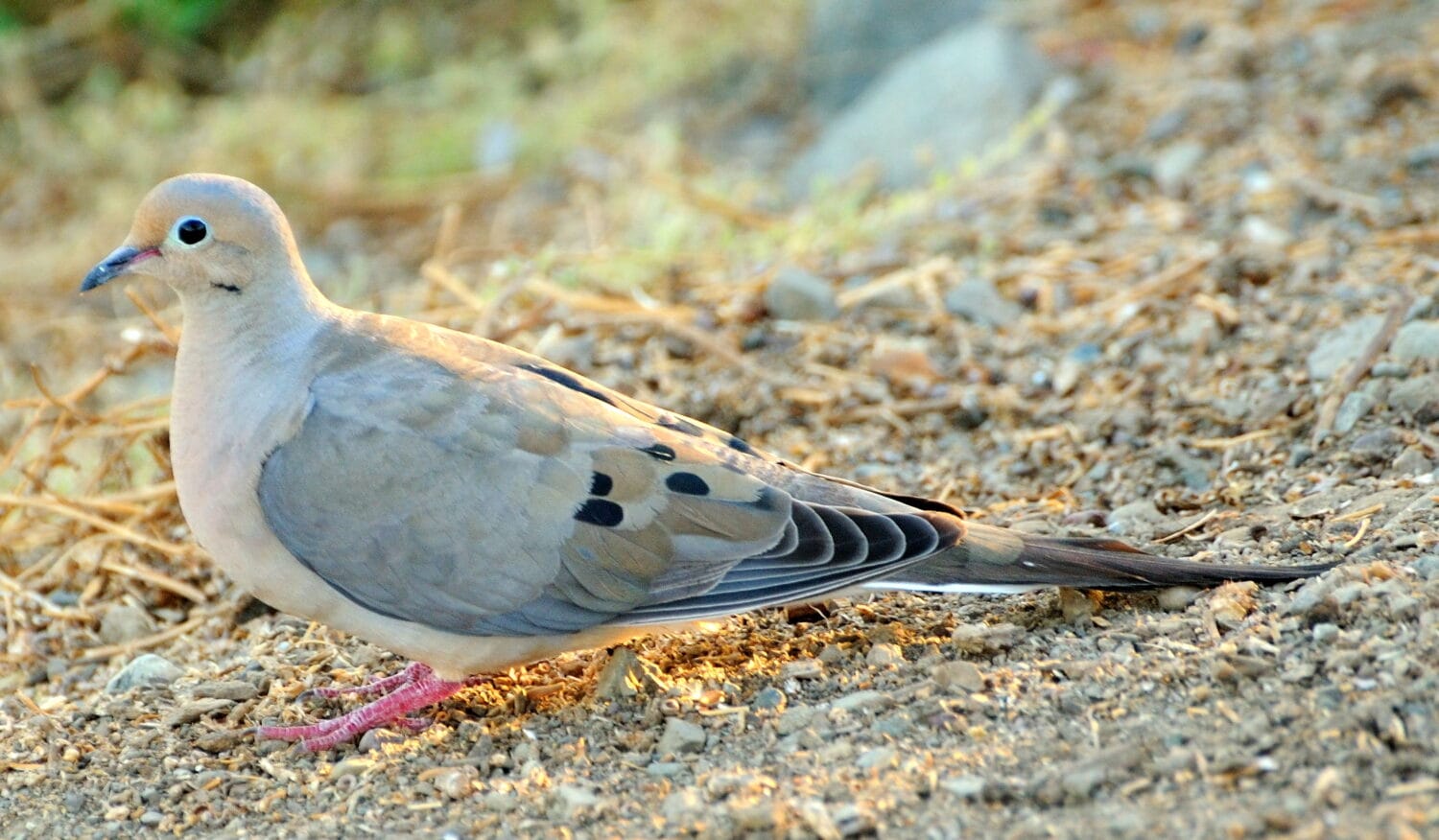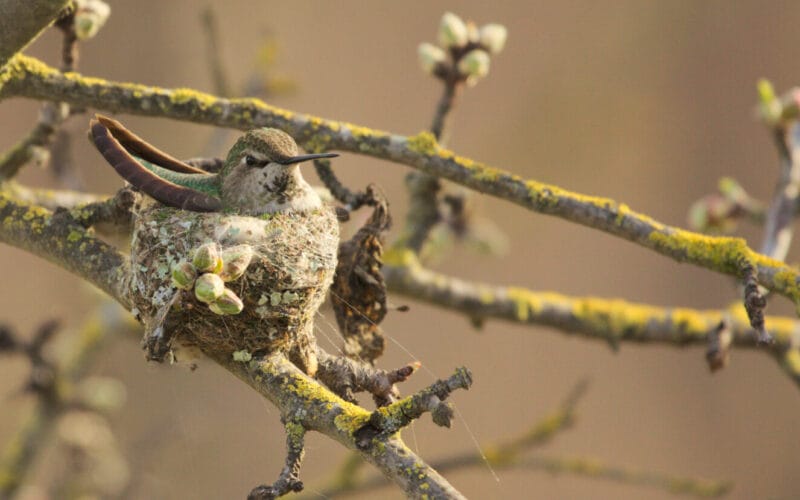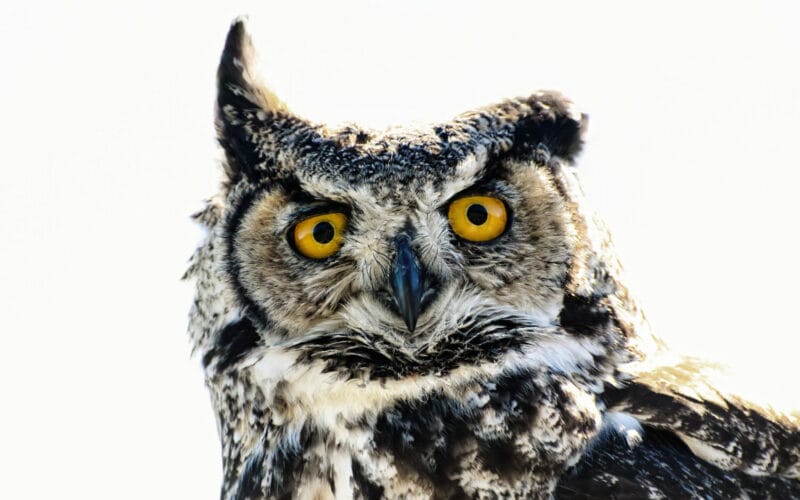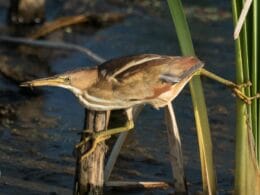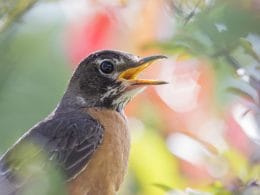The Mourning Dove is the most widespread dove in the United States. But why is it so successful and beyond the familiar cooing noise, what sounds does it make? In this post we will be looking into this often disregarded but beautiful bird.
Mourning Dove (Zenaida macroura)

The Mourning Dove is part of the Columbidae family, which has 51 genera and 353 species worldwide. In the Zenaida genus, there are 7 species, of which 3 are seen in the U.S. – the White-winged Dove and the Zenaida Dove, the former being seen across the southern states and the latter is a very rare sighting in Florida.
The Mourning Dove, however, is seen throughout continental America, into Canada (with a few sightings in Alaska) and south through Central America. This Range Map shows darker areas where sightings are most concentrated.
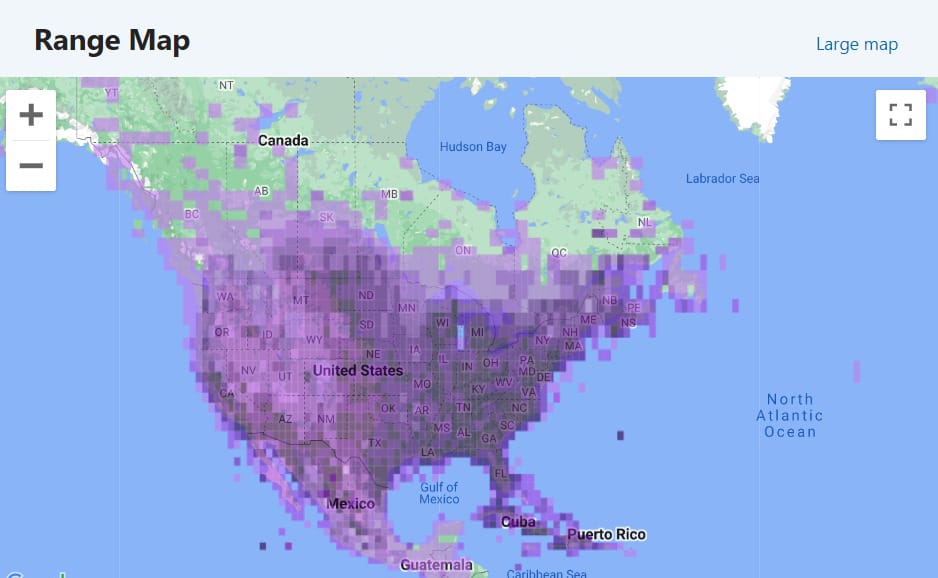
It doesn’t take much of a jump to realize that the Mourning Dove is adaptable to a range of habitats, from deserts to humid and even cold areas. The only environment they really don’t like are dense forests.
It is also very visible in urban areas and like its less attractive cousin, the Feral Pigeon, likes to visit bird feeders and pecks around in parks and gardens.
Identification
Doves often sit in a hunched position which gives them a rather plump appearance. Much more elegant when they stretch out, these doves are a mid-brown overall with distinctive black spots on the wings and black bars on the wing tips. The breast is fades into a rosy color and the feet are a scaly pink.
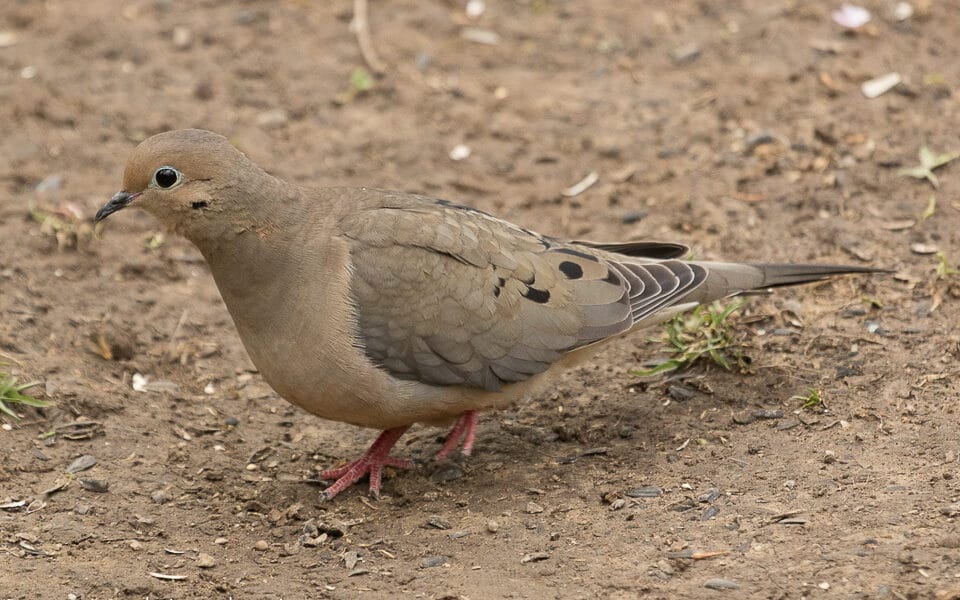
The bill is short and dark and adult birds have a pale blue ring around the eye. Their size is:
- Length: 9.1-13.4 in (23-34 cm)
- Weight: 3.4-6.0 oz (96-170 g)
- Wingspan: 17.7 in (45 cm)
Migration
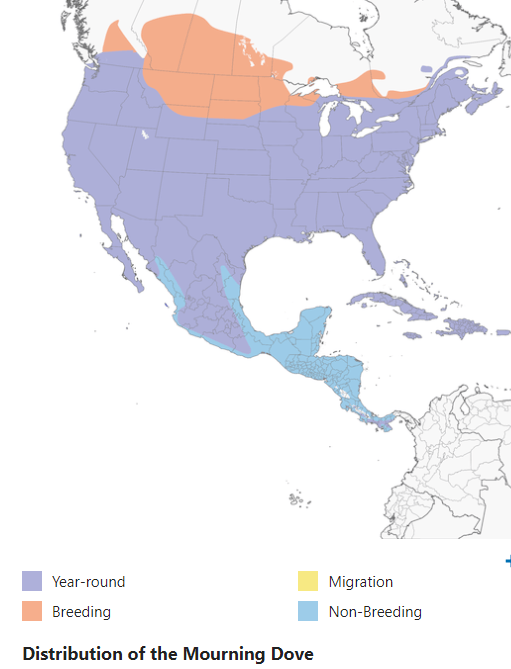
As you can see from the Distribution Map above, the Mourning Dove is partially migratory. Further study is needed but researchers think that generally, the northernmost birds move south during colder months, which makes sense.
That is not to say that the birds in the tan band all move to the blue areas, but that birds may move somewhat south of where they are. Or not at all, if they are warm enough in the winter.
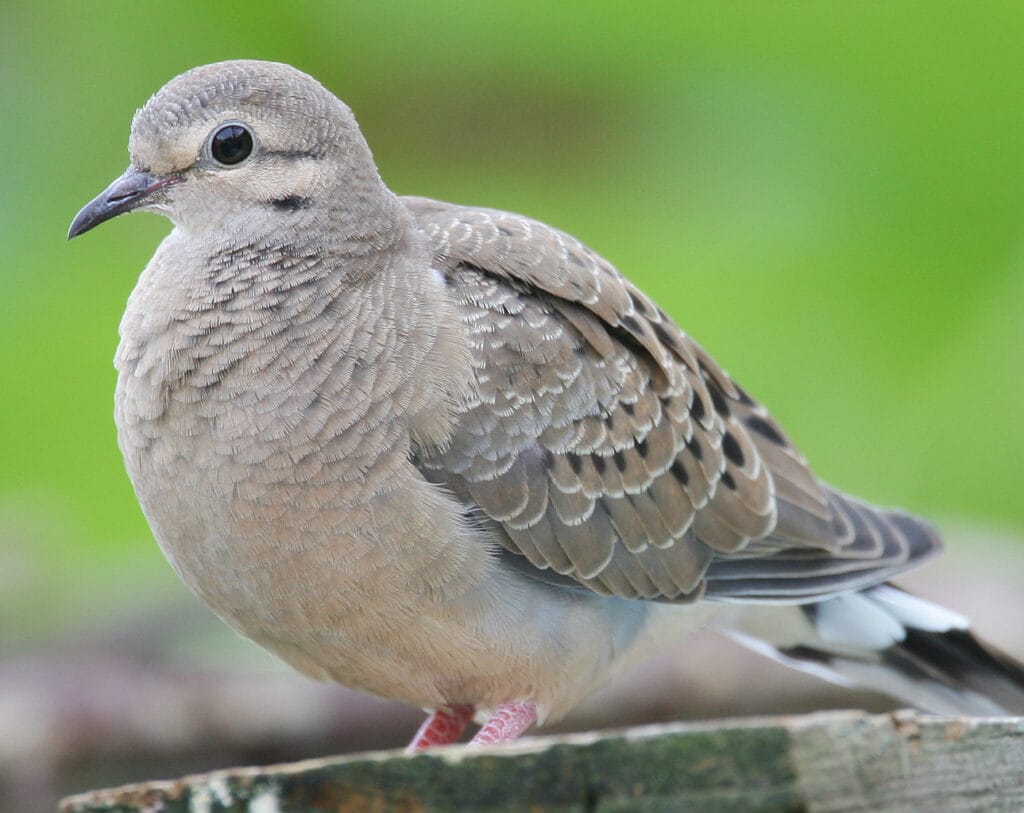
Diet
In order for a bird to be as successful as the Mourning Dove, they need to be able to adapt to new food sources. Doves and Pigeons are granivorous, meaning they eat grains and seeds predominately. It could be that their success is a combination of the widespread nature of agriculture and human presence.
Mourning Dove feed usually on the ground. If they are near a feeder, they are more likely to scratch around underneath it than fly up onto it. However, they don’t eat food straight away. Rather they gather it up into a special pouch called a crop and eat it later when it is safe to do so.
This ground habit increases their chances of being hunted and they are indeed food for a wide variety of avian and mammalian creatures. Not to mention that hunters regularly look for them as game birds.
Breeding
Mourning Doves do not mate for life, just that particular season. They do bond, however, with cooing calls and specific wing beats, usually by the male bird. They make simple nests from February/March onwards and will lay on average 2 eggs. These are incubated for up to 14 days with both parents sharing the duties.
Young doves are called squabs and, like most birds, the chicks grow very quickly and look like this at about 10 days.

Mourning Doves reach the fledgling stage at 13 to 15 days old and that huge bill looks a little more in proportion. They will be fed and nurtured by the parents for another 2 weeks.

The Sounds of the Mourning Dove
Standard song
You will have heard the Mourning Dove call and will recognize its most common sound. It is the quintessential dove and pigeon song:
It is a gentle and peaceful song and seems to communicate that all is well.
Call
A variation on the song, which I think sounds more like a call – in that it is communicating a specific message. This is a slightly more serious, urgent call:
Duet
At the beginning of this call, you can hear another bird replying. Again it seems to be more deliberate and communicative.
Call in flight
This recording is of the birds making a very different sound as they call during flight.
Wing beats
The Mourning Dove can often be spotted as it flies overhead by its wing noise. For such a delicate, elegant bird it is quite loud.
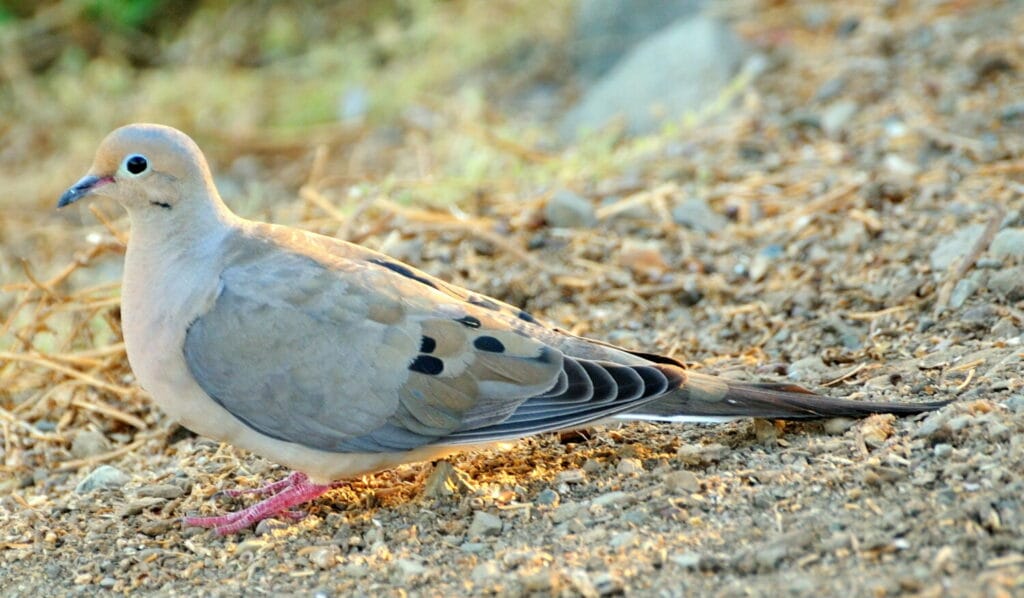
Conclusion
Some may consider this bird to be boring and dull. Familiarity breeds contempt and being one of the most common birds in the U.S. certainly might make us overlook the Mourning Dove. However, when you think about how adaptable and successful it is, you might reconsider. To be one of the most preyed upon birds and at the same time one that is most widespread, it is remarkable. Add to that the gentle nature of this bird and it becomes more and more endearing.
We hope you enjoyed reading about the Mourning Dove and next time you see one, tip your hat with respect!
FAQ
Some people believe that seeing a Mourning Dove means you are being visited by someone deceased. I don’t know if that is a good or bad thing!
They can be during mating season. Males that are competing for female attention may squabble amongst themselves.
The whistling sound they make when they take off or land is because they are beating their wings so fast. The air rushes through the feathers and makes the whistling noise.




